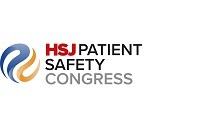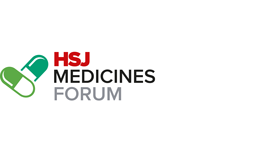What can be done to encourage more people to attend hospital appointments, rather than cancel or simply not turn up, asks Ed Rose
The number of patients who do not attend their appointments, known as did not attend or DNA rates, used to be one of the NHS’s most discussed issues. But as the use of text reminders reduced rates by up to 50 per cent, the topic slowly sunk from view.
‘In the past five years DNA rates have hit a plateau – a stubborn 9 per cent in acute hospitals’
Despite this success, we are left with two issues: first, much of the data suggests reminder messages are effective at encouraging people to cancel appointments, but not to attend them.
This is good for resources but not necessarily for patients. The evidence suggests many who cancel still have clinical needs, but a variety of other factors take precedence.
‘In the past five years DNA rates have hit a plateau – a stubborn 9 per cent in acute hospitals’
Could we change this so patients attend rather than simply cancel?
Second, in the past five years DNA rates have hit a plateau: a stubborn 9 per cent in acute hospitals. Could we still do more to improve this?
Persuasion theory
Proponents of persuasion theory would answer yes to both questions.
Barts Health Trust experimented with replacing appointment reminders with messages ‘tailored’ to persuasion theory

Persuasion theory came to the public’s attention mainly after the publication of Freakonomics, Nudge and other bestsellers.
According to the theory, we can influence the choices people make by tailoring our communication – even when using restrictive mediums such as text messages.
Barts Health Trust has a typical history of DNA rates. In early 2010 its main sites had a DNA rate of about 15 per cent. The trust then introduced SMS reminders and saw it drop sharply, to just below 10 per cent.
But much of this figure was due to texts driving up patient cancellation rates rather than encouraging attendance: 70 per cent of all non-attendances are now cancellations rather than DNAs.
‘SMS reminders saw DNA rates drop sharply but much of this figure was due to text driving up cancellations’
We tested whether the application of persuasion theory to reminder texts could encourage more patients – both those who cancel and those who DNA – to attend their appointments.
Persuasion theory can broadly be divided into two camp. First, “systematic information processing” states that humans make conscious rational decisions on the basis of available information.
The key to persuasion is therefore to emphasise logical links between a course of action and an outcome.
The second camp focuses on “heuristics”: the idea that it is impossible for the brain to absorb all available information and make logical decisions every time, and so people develop mental rules of thumb.
The systematic information processing idea of “rationally” persuading people is generally sub-divided into approaches emphasising the logical gain or loss in a given situation.
For heuristics, six core types are identified by Robert Cialdini, one of the theory’s leading proponents:
- Conformity: we behave in certain ways because we believe most other people behave similarly.
- Liking: we are more likely to do something if asked by someone we “like”.
- Authority: we are more likely to do something if asked by someone in authority.
- Reciprocity: if a person performs an act that benefits us, we become more likely to accede to future requests from them.
- Scarcity: we value things more when they are hard to obtain.
- Consistency: we are more likely to do something if we have committed to doing it previously.
Five services volunteered to take part, all of which were already using a “standard” reminder text including the appointment time with an option to cancel or reschedule. For one month these were replaced with a “tailored message” based on a specific persuasion theory; one theory per speciality.
‘Text messages were replaced with a “tailored message” based on a specific persuasion theory’
Attendance, cancellation and DNA rates within each speciality during the test period were compared with four months in which the normal message was sent. More than 9,000 patients received the texts.
For the systematic information processing model one message focused on the gains of attending appointments, one on losses “to the individual” caused by not attending, and another on losses “to the NHS”.
As conformity is the best evidenced heuristic, it was decided to construct one message solely around this. The remaining three – authority, scarcity and liking – were combined into one message.
Message for SIP – individual loss: “You have an appointment at [clinic] on [mm] [dd] at [hh]. Please text back CANCEL if your appointment is no longer needed or text REBOOK if you want to reschedule. If you miss your appointment without informing us, you may be discharged back to your GP.”
Message for SIP – gain: “You have an appointment at [clinic] on [mm] [dd] at [hh]. By attending your appointments you may improve your health, and can also ask any questions you have to your doctor. Please text back CANCEL if your appointment is no longer needed or text REBOOK if you want to reschedule.”
Message for heuristics – conformity: “You have an appointment at <clinic> on <mmm> <dd> at <hh>. Last week 95% of patients at St Bartholomew’s Hospital attended their appointment or cancelled in advance. Please do the same - text back CANCEL if your appt is no longer needed or text REBOOK if you want to reschedule.”
Message for heuristics – authority, scarcity and liking: “I just wanted to remind you that you have an appointment in one of our clinics at [clinic] on [mm] [dd] at [hh]. We are looking forward to seeing you. Please text back CANCEL if your appointment is no longer needed or text REBOOK if you want to reschedule as we are usually fully booked. Dr Benjamin Turner MRCP MS (Neurology Clinical Director).”
The results
The results were stark. None of the messages significantly impacted DNA rates. DNAs fell for three: SIP – individual loss; SIP – collective loss; heuristics – authority, scarcity and liking; and rose for two: SIP – gain; heuristics – conformity.
But no changes were statistically significant. So far perhaps unsurprising – texts are not the ideal medium for persuasion, and Nudge would not be the first bestseller to have “real world” replication issues.
- How the new era of citizen health is shaping the future of healthcare
- Huge variation in CCG spend on GP involvement
- Doubts over GP phone consultation
- Tech will transform the doctor-patient relationship
But when it came to cancellation rates, something much more interesting was happening.
While four of the texts had no impact, the text containing authority, scarcity and liking heuristics showed a major, statistically significant impact on cancellations - a reduction of over a third. This was mirrored by a corresponding rise in attendances.
In other words: the type of people who tended to cancel when receiving a generic message were instead attending when they received a tailored message.
Caught on convenience
Research shows that people often cancel appointments for reasons of convenience; to avoid missing a social engagement, for example.
But the same people are also conscientious, at least enough to text back and cancel rather than simply not turning up. Given these two factors, receiving a personal text from a highly qualified consultant, reading that they are looking forward to seeing you, and remembering just how scarce these appointments are, may be enough to influence a readjustment of priorities.
DNA rates may indeed have reached a natural plateau once texts were introduced. They were unaffected by tailored texts in this experiment, and nationally seem almost impossible to drive much below 9-10 per cent.
‘The results emphatically showed we could influence this cohort to attend their appointments’
Given this, we should follow the airline industry’s lead and overbook clinics based on historical trends, breaking the link between missed appointments and wasted resource. This would not solve the problem of any clinical detriment to patients who DNA, but would at least represent greater efficiency in use of resources.
In the test at Barts Health, 70 per cent of all “non-attendances” were patient cancellations rather than DNAs, and the results emphatically showed we can influence this cohort to attend their appointments.
The key message from this experiment is that where attendance is critical (cancer screening, for example) we should consider adapting communication to “persuade” patients to attend, specifically by employing heuristics. This would be low cost, low effort and may allow us to achieve better outcomes.
Ed Rose is a former general manager at Barts Health Trust



























1 Readers' comment